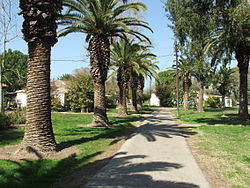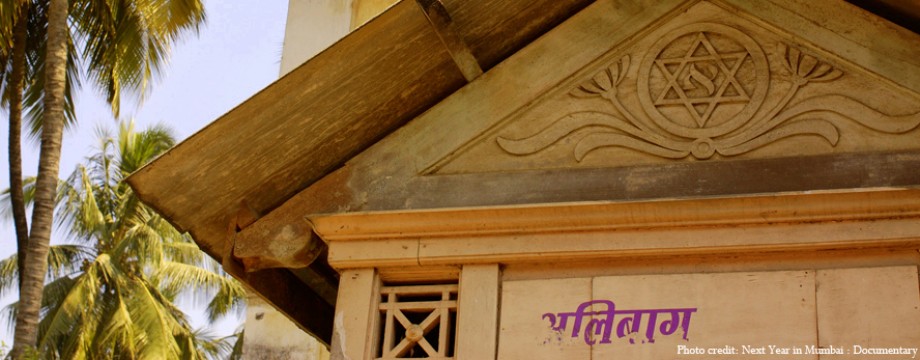
A kibbutz is a collective community in Israel that was traditionally based on agriculture. The first kibbutz, established in 1909, was Degania. Today, farming has been partly supplanted by other economic branches, including industrial plants and high-tech enterprises. Kibbutzim began as utopian communities, combining socialism and Zionism. In recent decades, some kibbutzim have been privatized and changes have been made in the communal lifestyle. A member of a kibbutz is called a kibbutznik.
As of 2010, there were 270 kibbutzim in Israel. Their factories and farms accounted for 9% of Israel’s industrial output, worth US$8 billion, and 40% of its agricultural output, worth over $1.7 billion. Some kibbutzim have also developed substantial high-tech and military industries. For example, in 2010, Kibbutz Sasa, with around 200 members, generated $850 million in annual revenue from its military-plastics industry.
The first kibbutzim

The kibbutzim were founded by members of the Bilu movement who emigrated to Palestine. Like the members of the First Aliyah who came before them, most members of the Second Aliyah wanted to be farmers. Joseph Baratz, one of the pioneers of the kibbutz movement, wrote a book about his experiences:
“We were happy enough working on the land, but we knew more and more certainly that the ways of the old settlements were not for us. This was not the way we hoped to settle the country—this old way with Jews on top and Arabs working for them; anyway, we thought that there shouldn’t be employers and employed at all. There must be a better way.”
Though Baratz and others wanted to farm the land themselves, becoming independent farmers was not a realistic option in 1909. As Arthur Ruppin, a proponent of Jewish agricultural colonization of the Trans-Jordan, would later say:
“The question was not whether group settlement was preferable to individual settlement; it was rather one of either group settlement or no settlement at all.”
Development of kibbutz movements
In 1927, the United Kibbutz Movement (HaqKibbutz HamMeuhad) was established. Several HaShomer Hatzair kibbutzim banded together to form HaKibbutz HaArtzi. In 1936, the Socialist League of Palestine was founded and served as an urban ally of HaKibbutz HaArtzi. In 1946, HaKibbutz HaArtzi and the Socialist League combined to form the Hashomer Hatzair Workers Party of Palestine, which in 1948, merged with Ahdut HaAvoda-Poalei Zion to form the left-wing Mapam party.

In 1928, Degania and other small kibbutzim formed “Hever Hakvutzot” (“association of kvutzot”). Kvutzot were deliberately small, not exceeding 200 members, in the belief that this was imperative for maintaining trust. Kvutzot did not have youth-group affiliations in Europe. Kibbutzim affiliated with Hakibbutz Hameuhad took in as many members as they could. Givat Brenner eventually came to have more than 1,500 members. Artzi kibbutzim were also more devoted to equality of the sexes than other kibbutzim. Women called their husbands ishi (“my man”) rather than the customary Hebrew word for husband ba’ali (lit. “my owner”). The children slept in children’s houses and visited their parents only a few hours a day.
Types of kibbutzim
There are three kibbutz movements:
1.The Kibbutz Movement, which constitutes an umbrella organization of two separate movements and ideologies:
The United Kibbutz Movement, founded in 1979 as a merger of two older movements: the United Kibbutz and Union of Kvutzot and Kibbutzim.
Kibbutz Artzi Hashomer Hatzair.
2. Religious Kibbutz Movement Hapoel HaMizrachi.
Many kibbutzim were initially established by Nahal groups affiliated with Israeli youth movements, among them HaNoar HaOved VeHaLomed, Hashomer Hatzair, and HaMachanot HaOlim.
Following many changes the kibbutzim went through over the years and following the appeal made to the Israeli High Court of Justice by the Mizrahi Democratic Rainbow Coalition in 2001, the state was required to redefine the exact definition of a kibbutz to determine the rightful benefits kibbutz members should be granted by law. The reactivated legal definition was given to the Industry, Trade, and Labour Minister of Israel on December 15, 2005. According to this classification, there are three types of kibbutzim:
1. Kibbutz Shitufi: A kibbutz still preserving a cooperative system.
2. Kibbutz MitChadesh: A community with a number of cooperative systems in its intentions (guaranteed minimal income within the community, partnership in the ownership of the production means, partnership in the ownership of the lands, etc.).
3. Urban Kibbutz: A community existing within an existing settlement (city). Since the 1970s, around 100 urban kibbutzim have been founded within existing Israeli cities. They have no enterprises of their own, and all of their members work in the non-kibbutz sector. Examples include Tamuz in Beit Shemesh, Horesh in Kiryat Yovel, Jerusalem, Beit Yisrael in Gilo, Jerusalem, and Migvan in Sderot.
Kibbutzim and Settlements in Israel
1. Nevatim
- Address: Nevatim, Southern District, Israel
- Website: N/A
- Email: N/A
- Phone: N/A
- Links: Nevatim Wikipedia
- What they do: Nevatim is home to a significant community of Cochin Jews. The kibbutz focuses on agriculture, including crop farming and livestock. The community has preserved traditional Cochin Jewish customs and practices.
2. Shahar
- Address: Shahar, Southern District, Israel
- Website: N/A
- Email: N/A
- Phone: N/A
- Links: Shahar Wikipedia
- What they do: Shahar is an agricultural settlement with a diverse farming base. The community includes members of the Bene Israel group, who have integrated their cultural practices with the kibbutz lifestyle.
3. Yuval
- Address: Yuval, Northern District, Israel
- Website: N/A
- Email: N/A
- Phone: N/A
- Links: Yuval Wikipedia
- What they do: This kibbutz, located in northern Israel, hosts a mixture of Jewish communities, including Indian Jews. The primary activities are agriculture and dairy farming, with an emphasis on community living and cultural preservation.
4. Mesilat Zion
- Address: Mesilat Zion, Central District, Israel
- Website: N/A
- Email:</strong??
